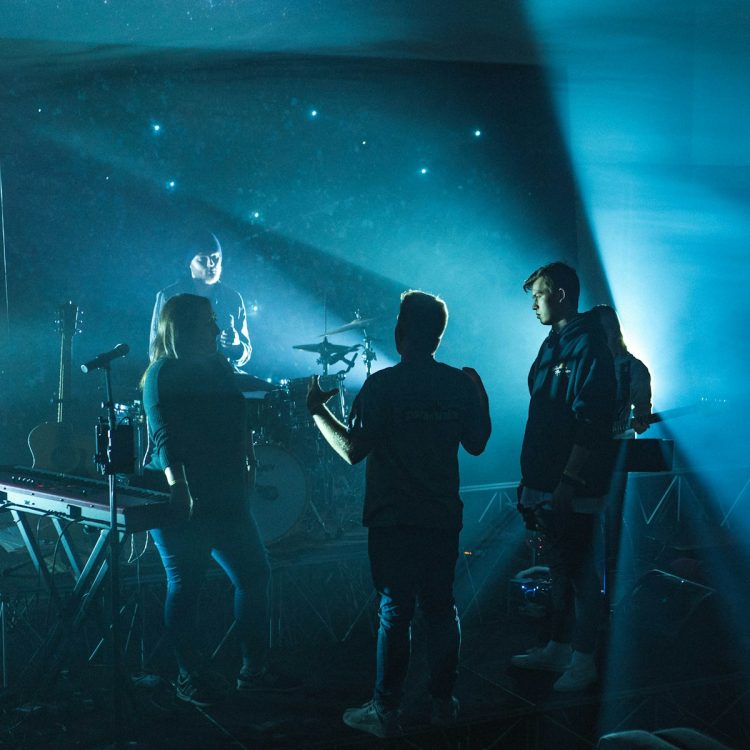When the lights dim and the first chord reverberates through a concert hall or stadium, the crowd erupts in cheers, their energy surging toward the stage like a tidal wave. For the audience, this is the magic moment—the beginning of a night filled with music, movement, and emotion. But for the hundreds of people who make that moment possible, the real show started hours, days, even weeks before. Behind every concert is a sprawling, intricate, often chaotic machine of moving parts, unsung heroes, and relentless effort. It’s a world that the audience rarely sees but one that’s absolutely vital to every unforgettable performance.
The Early Hours: Loading In
Long before fans line up outside the venue, the loading dock becomes a hub of activity. Trucks begin arriving, usually in the early morning hours, carrying everything from massive speaker systems and lighting rigs to instruments, cables, costumes, and staging equipment. A single concert might require several semi-trailers’ worth of gear.
A crew of roadies and local stagehands unloads and organizes this mountain of equipment with a kind of practiced choreography. Each crate and case is labeled with almost obsessive precision—every piece has its place. These teams are often invisible to fans but are among the hardest-working people in the music industry. Their job isn’t just about muscle; it’s about efficiency, timing, and problem-solving under pressure.
Building the Stage: Engineering the Experience
While the load-in is happening, the staging crew begins assembling the skeleton of the performance. Stages today are more than platforms—they’re entire environments, often custom-designed for each tour. Some artists bring elaborate set pieces, moving platforms, video screens, pyrotechnic rigs, and even built-in runways to interact with the crowd.
Lighting designers and riggers are usually next on the scene, hoisting huge lighting trusses high above the stage. The lighting isn’t just for visibility—it sets the tone, mood, and rhythm of the show. Every flicker and flash is pre-programmed and synced to the setlist, timed down to the second.
Then come the sound engineers, perhaps the most crucial yet invisible members of the team. They tune the venue’s acoustics using digital boards and strategically placed microphones. Front-of-house engineers manage the sound the audience hears, while monitor engineers manage what the artists hear on stage—a detail that can make or break a performance.
The Artists’ World: Soundchecks and Prep Time
Sometime during the afternoon, the performers arrive. Their schedule is tight, but there’s still a bit of a bubble created around them—a mix of privacy, preparation, and ritual. Soundcheck is an essential part of the day. It’s not just about checking volume levels; it’s about feeling the space, adjusting to how the music reacts in the venue, and mentally stepping into performance mode.
Backstage, dressing rooms buzz with activity. Stylists prep outfits, hair, and makeup artists do their magic, and tour managers keep everything on schedule. Artists might have their own rituals—some meditate, some rehearse, others laugh and bond with the band or crew. There’s a palpable energy backstage: excitement laced with a hint of nerves, the calm before the sonic storm.
Coordinating the Chaos: Tour Management and Logistics
While all this physical and technical work is underway, a different kind of orchestration happens in parallel. Tour managers and production coordinators operate as the brains of the operation. They manage everything from travel and accommodations to local crew scheduling, meal planning, press obligations, and emergency plans.
They are the fixers—the ones who know which backup generator to call if the power fails or how to reroute traffic if a parade is blocking the venue. They liaise with venue managers, security personnel, local authorities, and hospitality teams to make sure the show runs like clockwork, even when surprises pop up—as they inevitably do.
Showtime: The Live Moment
As the opening act warms up the crowd and the headliner prepares for their entrance, there’s a controlled frenzy backstage. Stage managers keep everyone moving on cue. Technicians double-check guitar tunings, battery levels in wireless packs, and timing for any special effects.
When the lights go out and the first notes play, everything shifts. It’s go time. For the audience, it’s pure emotion. For the backstage crew, it’s intense focus. They listen on intercoms, follow the setlist like a sacred script, and prepare for every moment before it happens.
Guitar techs stand just out of sight, ready to hand off instruments between songs. Lighting techs monitor real-time lighting cues. Video operators manage live feeds for onstage screens. It’s a symphony of coordination, where everyone knows their beat.
The Aftermath: Load-Out and Recovery
As the final encore fades and the crowd filters out, exhausted but elated, the crew doesn’t stop. In fact, the real grind begins again. Load-out often happens in reverse order of setup and needs to be done quickly, especially if the tour moves to another city the next day.
Road cases roll out. Lighting trusses come down. Instruments are packed. What took ten hours to build often comes down in three. The team works through the night, sometimes sleeping only on the bus to the next city.
It’s an endless cycle—set up, perform, break down, travel, repeat. For months at a time. It’s grueling, but for those who choose this life, it’s also deeply rewarding.
The Invisible Magic
What makes this backstage world so compelling is that it exists entirely to serve a fleeting, magical moment. Nobody claps for the monitor engineer who fixed the feedback mid-song or the rigger who made sure the light rig didn’t fall. Few fans ever think about the runner who fetched herbal tea for a singer with a sore throat or the security guard who quietly averted a fan incident before it escalated.
But these stories, these quiet victories, are the foundation of the concert experience. They are the reason artists can shine, and audiences can lose themselves in the music.
Conclusion: More Than Just a Show
Behind every concert is a miniature universe—a blend of artistry, logistics, engineering, and sheer human determination. It’s a place where dreams are built, note by note, light by light, heartbeat by heartbeat. While the crowd sees only what happens under the spotlight, the real show, in many ways, happens in the shadows.
So the next time you’re at a concert, screaming the lyrics with your hands in the air, take a moment to imagine the world behind the curtain. Because somewhere backstage, someone is making sure the magic never misses a beat.





